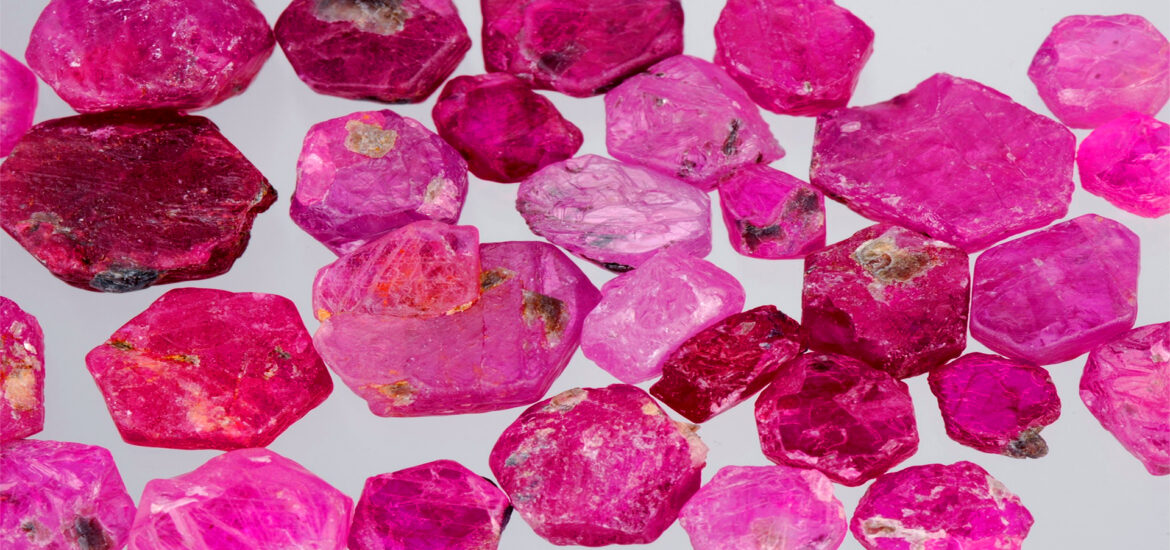The Risks Of Investing In Gemstones: What You Should Know
Gemstones have long been regarded as symbols of wealth, beauty, and permanence. From rubies and sapphires to emeralds and spinels, they attract collectors and investors with promises of value appreciation and timeless demand. Unlike stocks or bonds, gems are tangible, portable, and often emotionally appealing. Yet beneath their allure lies a complex investment landscape filled with risks that can surprise the unprepared. Market volatility, illiquidity, and the threat of counterfeits make gemstone investments far from straightforward. Understanding these pitfalls is critical for anyone considering gems not just as adornment but as a financial asset.
Illiquidity: The Silent Challenge
One of the most underestimated risks of gemstone investing is illiquidity. Unlike publicly traded assets, gems cannot be sold instantly on an open exchange. Finding a buyer willing to pay the expected price often takes months or even years. Auction houses, private dealers, and specialized marketplaces remain the main channels, and each involves fees, commissions, or negotiation hurdles. For investors needing quick cash, this lack of liquidity can create serious problems. While a rare diamond or untreated ruby may eventually fetch a strong price, the time it takes to convert the stone into cash undermines its usefulness as a flexible financial asset.
The Trap Of Unrealistic Expectations
Many first-time investors assume that because gemstones are valuable, they can be sold easily at any time. In reality, liquidity depends heavily on rarity, provenance, and market timing. A stone bought today may remain in storage for years before the right buyer emerges.
Market Volatility And Unpredictable Demand
Gemstone markets are notoriously volatile. Prices fluctuate based on fashion trends, geopolitical changes, and even the discovery of new mines. For instance, when a large deposit of sapphires is discovered, global prices may fall as supply increases. Conversely, political instability in a producing country may restrict supply, causing sudden spikes. Unlike gold or oil, there are no centralized exchanges or transparent benchmarks to provide clear pricing. As a result, valuations vary widely depending on dealer networks and regional demand. Investors who enter without understanding these fluctuations may face disappointing returns or unexpected losses.
Fads And Shifts In Taste
Consumer preference plays a powerful role. A gemstone that dominates fashion today may fall out of favor tomorrow, leaving investors with assets that no longer command premium prices. Trends are fickle, and stones tied to specific aesthetics risk rapid devaluation.

The Risk Of Counterfeits And Treatments
Counterfeit and treated gemstones pose another significant danger. Modern technology makes it increasingly difficult to distinguish natural stones from synthetic or treated ones without specialized equipment. Heat-treated sapphires, glass-filled rubies, or synthetic emeralds can appear identical to natural gems, deceiving inexperienced buyers. Even when stones are genuine, undisclosed treatments can reduce value dramatically. Without certification from reputable laboratories, investors risk paying high prices for gems that hold far less resale potential. Counterfeits not only diminish investment returns but also damage trust in the entire market.
The Importance Of Certification
Only reports from trusted institutions such as GIA or SSEF can provide reliable assurances of authenticity and treatment history. Even so, certification adds costs, and unscrupulous dealers may attempt to manipulate or falsify documents.
Storage, Security, And Insurance Costs
Owning gemstones entails more than acquisition. Secure storage is essential to protect against theft, while insurance policies add recurring costs that eat into returns. Banks and vault services charge fees, and personal safes may not provide sufficient protection for high-value collections. Insurance premiums vary depending on stone type, appraised value, and location, often amounting to a substantial percentage of the asset’s annual worth. Unlike digital investments, gems must be physically safeguarded, and this requirement complicates ownership. Investors must calculate these hidden costs before assuming that gemstones will generate easy profits.
The Burden Of Responsibility
Unlike stocks held by a brokerage, gemstones require direct responsibility from the owner. Mismanagement of storage or incomplete insurance coverage can result in devastating losses that no market rebound can repair.
Lack Of Standardized Pricing
Another difficulty lies in the absence of standardized pricing. While gold is measured in ounces and has a transparent global price, gemstones vary drastically based on color, clarity, cut, and carat weight. Two stones of identical size may differ in value by multiples depending on subtle quality differences. This lack of standardization creates uncertainty, leaving inexperienced investors vulnerable to overpaying. Dealers may exploit asymmetry of information, charging inflated prices for stones with minor flaws. Without years of expertise or guidance from trusted professionals, buyers risk entering the market at a disadvantage.
Expertise As A Barrier
The gemstone market favors insiders who can evaluate stones with precision. For outsiders, the learning curve is steep, and mistakes often prove costly. Professional consultation reduces risk but increases transaction costs, complicating profitability.
Long-Term Value Is Not Guaranteed
Though gemstones are often marketed as timeless stores of value, their long-term performance is uncertain. Unlike gold, which has millennia of stability, gem prices have risen and fallen unpredictably. Historical examples show that certain stones once considered highly valuable lost favor, reducing their resale value dramatically. Furthermore, gems do not generate passive income. Unlike real estate or dividend stocks, they produce no yield, meaning investors must rely entirely on appreciation. If appreciation fails to materialize, the capital remains locked in a non-productive asset.
The Illusion Of Permanence
While gems themselves may last forever physically, their financial value is tied to human perception, which changes with culture, fashion, and market dynamics. Permanence of material does not guarantee permanence of price.

Regulatory And Ethical Issues
Gemstone investments may also involve legal and ethical complications. Many stones originate in regions with weak regulatory oversight or conflict-related mining operations. Ownership of such stones can create reputational risks, especially for businesses. Governments sometimes impose import restrictions or certification requirements, complicating cross-border sales. For investors, this creates uncertainty: even if a stone retains value, selling it internationally may be challenging. Ethical considerations—such as avoiding “blood rubies” or stones mined with child labor—add another dimension of complexity, as more consumers and institutions demand transparency in sourcing.
Reputation As A Factor
Investors who fail to account for ethical sourcing risk not only financial loss but also damage to their personal or business reputation. Responsible sourcing is increasingly tied to long-term value retention.
Opportunity Costs Of Gemstone Investing
Beyond direct risks, gemstone investments carry opportunity costs. Capital tied up in illiquid, non-productive stones cannot be deployed elsewhere. Entrepreneurs may miss opportunities in equities, real estate, or expanding their businesses by holding gems. While diversification can justify a small allocation to gemstones, overweighting them limits flexibility. In this sense, the risk is not only losing money but also failing to maximize potential returns compared to other asset classes.
Balancing Portfolios Wisely
A prudent strategy is to treat gemstones as complementary investments, not as core portfolio holdings. Overexposure creates vulnerabilities, while limited exposure adds diversity without excessive risk.
The Conclusion
Investing in gemstones carries undeniable risks that every prospective buyer should recognize. Illiquidity, market volatility, counterfeits, storage costs, and the absence of standardized pricing all complicate what may appear at first to be a straightforward investment. Ethical and regulatory issues add further challenges, while long-term appreciation is far from guaranteed. Gems may dazzle as symbols of status and security, but as financial assets they demand caution, expertise, and realistic expectations. For investors, the key is not to avoid gemstones entirely but to approach them with clear awareness of the pitfalls, ensuring that beauty does not blind them to the risks hidden beneath the surface.

